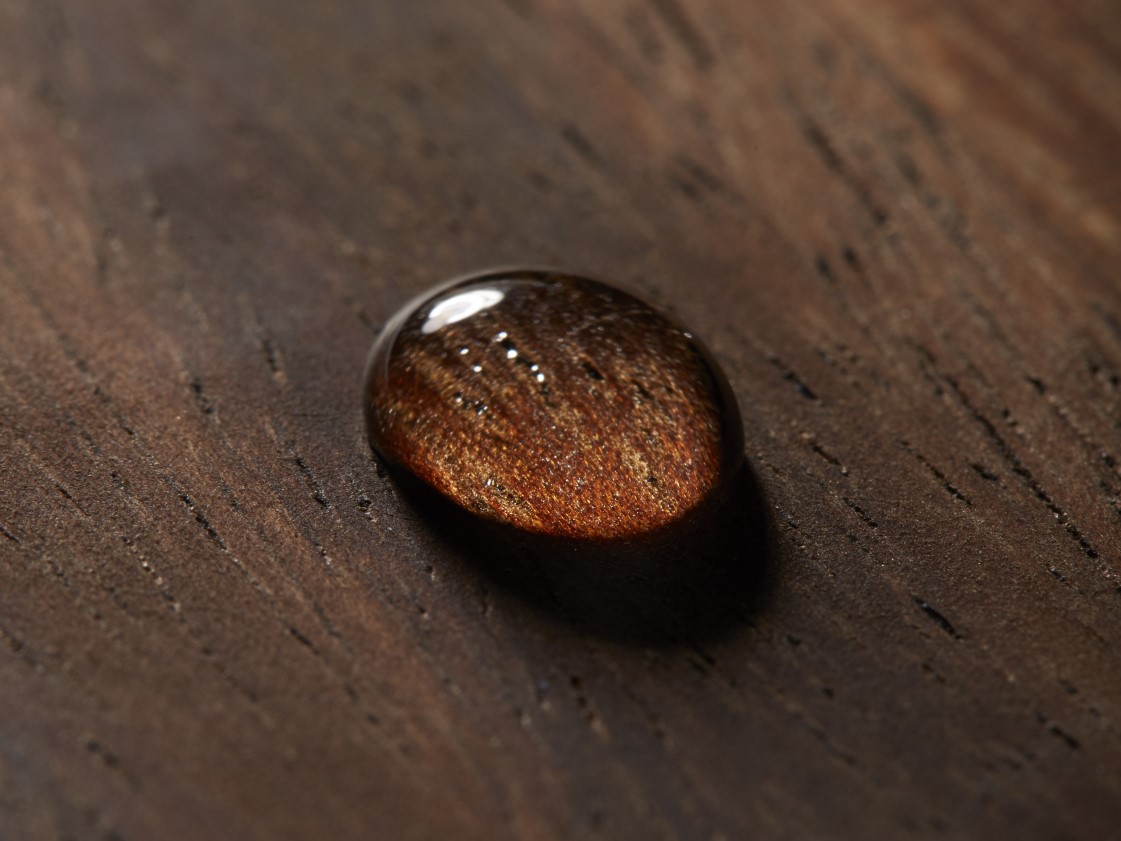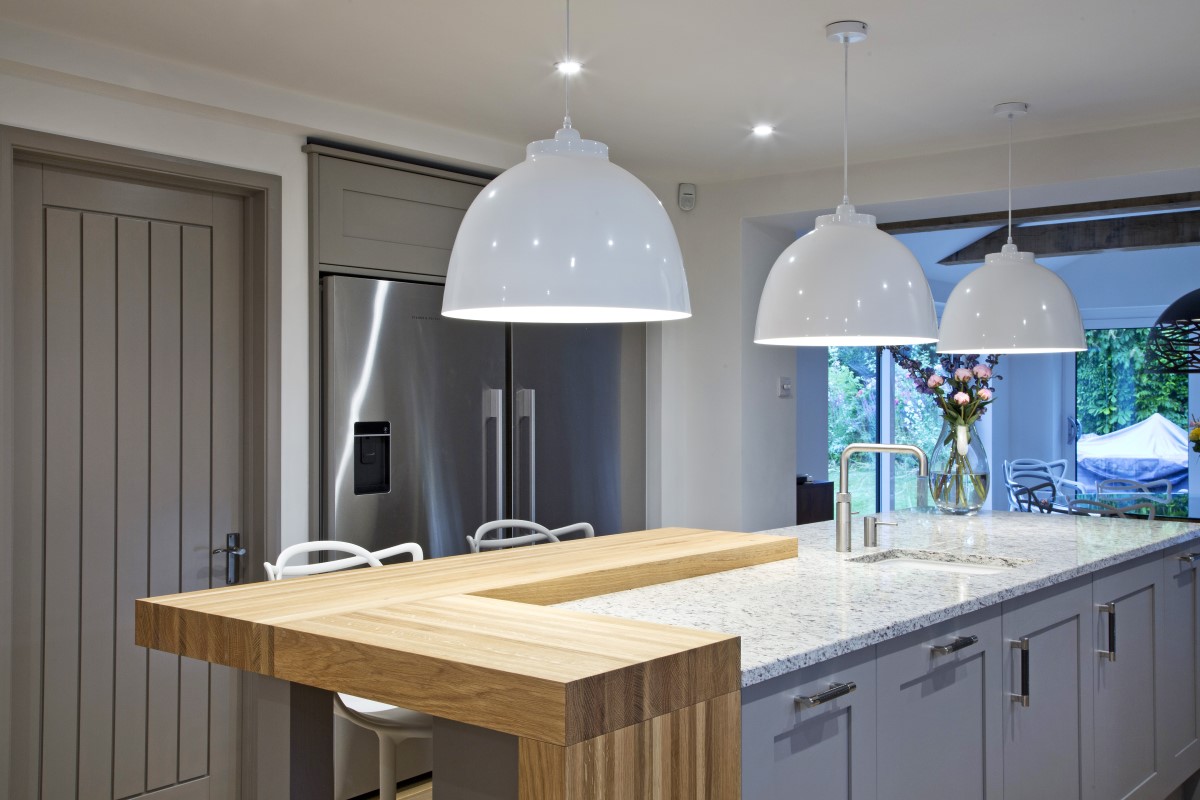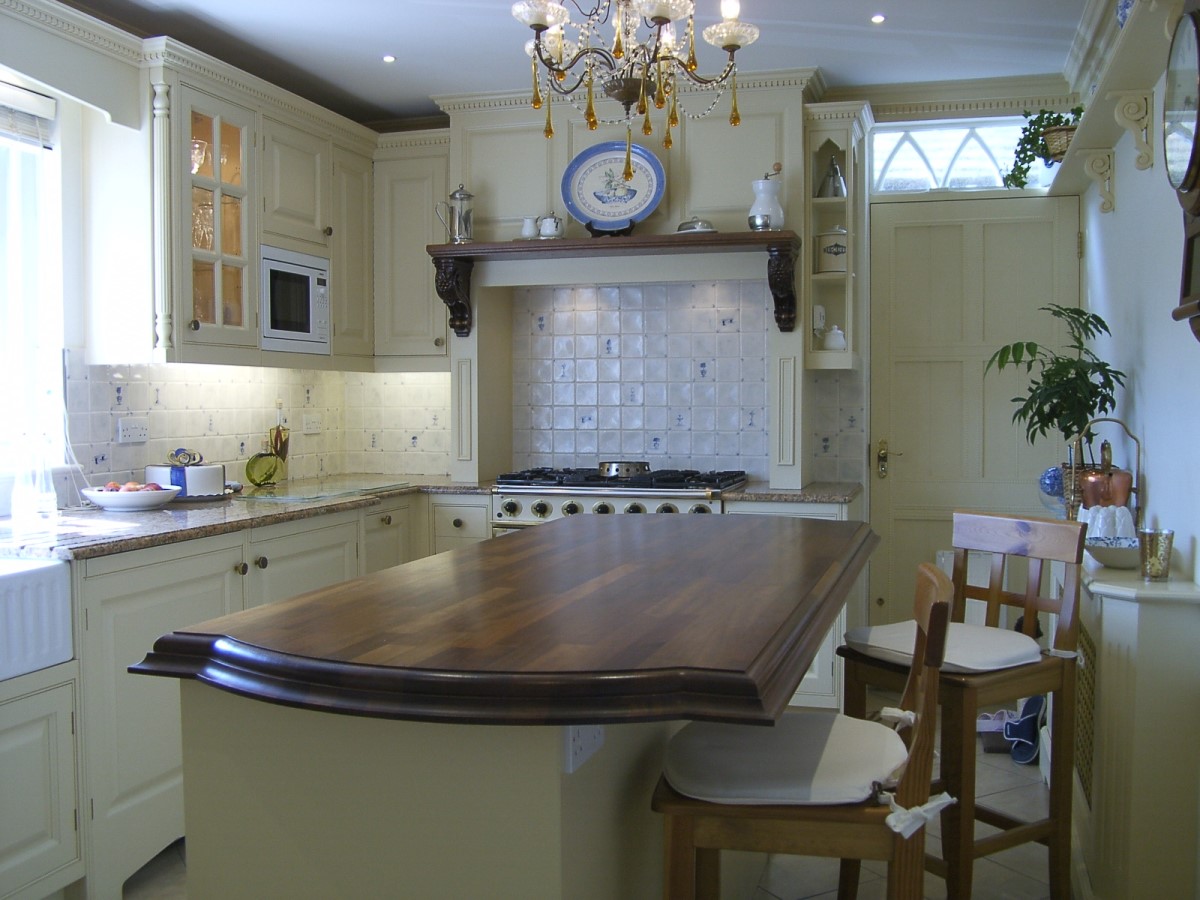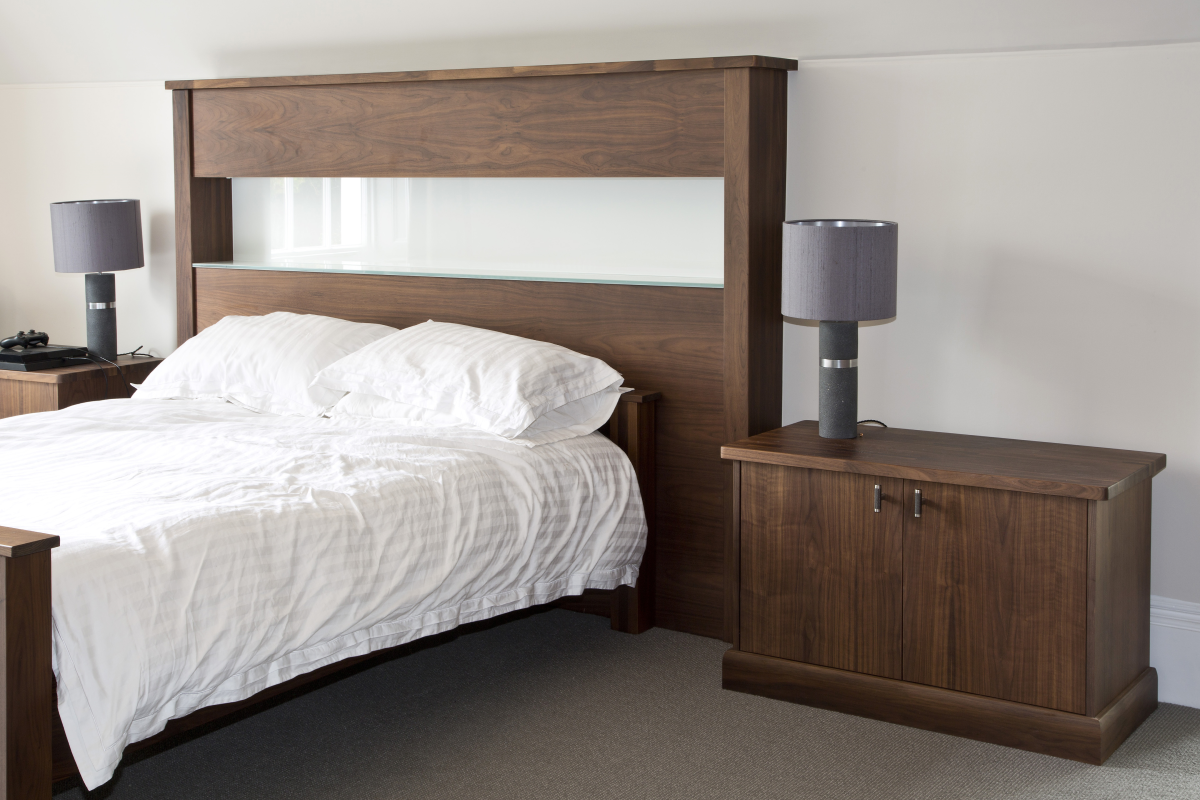Caring for wooden surfaces
We generally don’t recommend extensive wooden worksurfaces in kitchens. But we do love to use the natural beauty of wood to complement and embellish more hardwearing surfaces.

This kitchen benefits from the warmth of natural wood, but with harder wearing worksurfaces where needed.Our reticence to use wood throughout a kitchen comes from the fact that it can require a lot of care and attention to keep it in the best condition. In a high usage area, for example where you’re preparing food, this can become a real hassle.
But maintaining smaller areas of wooden surfaces, which aren’t used intensively, isn’t too much trouble.

We also install many solid wood features in our bedrooms and studies –these lighter usage areas mean that the natural timber needs relatively little maintenance.

Caring for new wooden surfaces
A little time and effort when your wooden surfaces are installed can give you a head start on their long-term maintenance.
We recommend oiling your wood a couple of times a week for the first three weeks. In this time, don’t allow any water to lie on the surface, wipe it away immediately.
When you oil the wood, you’ll notice that the colour darkens, but over time this will mellow.
Long term care
Once the wood has been protected with the initial coats of oil, you will need to re-oil it regularly. How frequently depends on a number of factors, such as how often you use the surface and the environment it’s in.

A good rule of thumb is to drip some water on it. If it smudges, you need to re-oil the wood. If it remains in distinct droplets, then you don’t need to do anything.
Specific wood types
Ash, beech, cherry, maple, oak and walnut
Use a wood finishing oil for the initial and maintenance coats. Generally speaking, you’ll only need to re-coat it a couple of times a year.

End grain butcher’s blocks

Sunflower oil is the best choice for these worksurfaces. The worksurface and all edges should be coated. If the surfaces start to feel rough, you can sand them down with extra fine, 240 grit sandpaper and re-oil them.
Iroko
This very durable hardwood should be treated with sunflower oil. It will significantly darken in colour as the initial coats are applied.
Daily applications are required for the first week after installation, then weekly. Gradually increase the gaps between re-coating until you’re doing it every three or four months.

Woods with a lacquer finish
These surfaces do not need to be oiled. If they start to dull over time, you can polish with furniture wax to bring back the shine.

Problem solving
Heat rings and stains
Properly oiled wood should be fairly impervious to marks. If they do occur, sand the surface with extra fine, 240 grit sandpaper, always in the same direction as the grain of the wood. Then re-oil as for newly installed wood.
If you have a lacquered surface, you should take care to never put hot objects on it. If damage does happen, waxing should remove the worst of it.
Little white spots
These are usually caused by dripping detergent or soap on the wooden surface. These chemicals break down the oils and expose the bare wood. Use the same process to remove them as for heat rings and other stains.
Tacky feel to the surface
Applying too much oil or not leaving long enough between oiling sessions, can cause the wood to reach saturation point. As a result, oil lingers on the surface and can become tacky.
Wipe the surface with a mild detergent. If it’s particularly ‘gummy’ you may need to gently use a nylon (not metal) scourer on the surface.
Leave the wood to dry and then rub it over with extra fine, 240 grit sandpaper, in the direction of the grain. Apply a minimal coat of oil and wipe the surface after fifteen minutes to remove any excess.
Cracks
These are often caused by not oiling the wood correctly; allowing it to dry out and split. Having said that, the natural movement of wood over time can lead to cracks occurring for no obvious reason.
Applying oil can help some minor cracks to disappear. If this doesn’t solve the problem, you will need to use a suitable filler to fill the gap.
Other worksurface options
Of course, wood is just one of the many materials you can use for worksurfaces. Other natural textures, such as granite, quartz and marble, can give your room an organic feel without the maintenance needs of wood.

Pop in to our Sevenoaks showroom to explore the options or get in touch to discuss your project.
